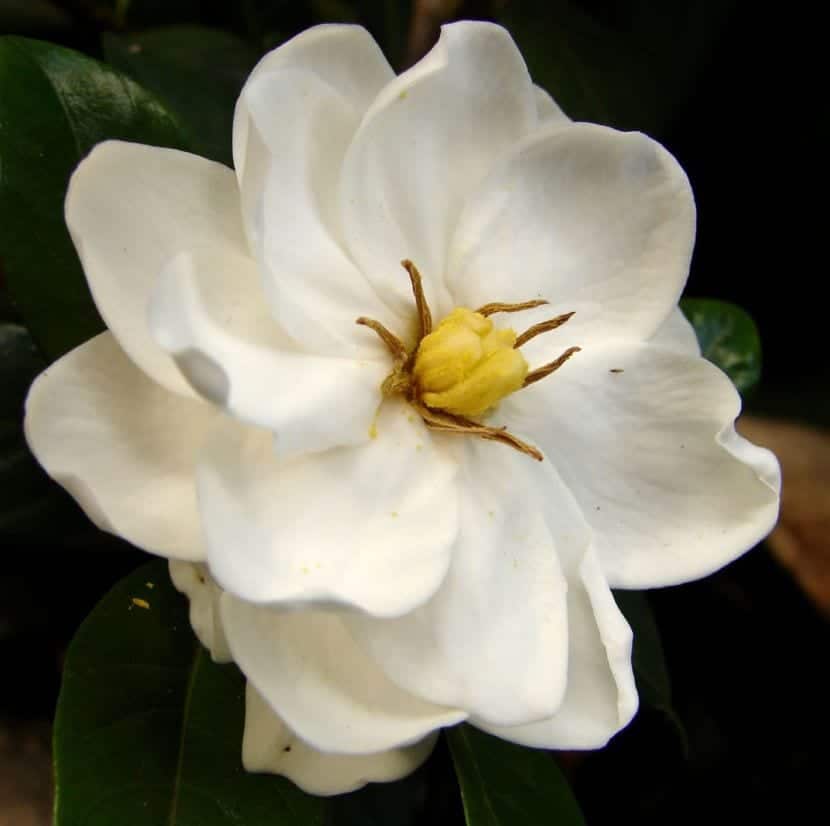
It is common to find in all nurseries and garden centers some trees and shrubs that are not typical of the place where we live. They are plants known as acidophilicwhich originate mainly from Asia, specifically China and Japan. These plants live in acid soils, that is, with a pH between 4 and 6; and chlorosis appears in its leaves when that pH is higher. They also enjoy a climate whose seasons are well differentiated: with a rather warm-temperate summer and winter with some mild frosts; and whose rainfall is abundant, which makes the climate humid all year round.
If our climate is slightly different, these plants may have a hard time adapting. But don’t worry: we’ll give you a few tips to make things easier for your beloved plant.
But first, we will show you a list of them:
Maple palmate

The Maple palmatebetter known as japanese
mapleIt is one of those trees that you fall in love with as soon as you see it. Its webbed leaves, which turn red or orange in autumn, make this magnificent tree an exceptional choice to decorate any temperate garden around the world. In addition, it is widely used as bonsai, as it tolerates pruning very well.Camellia

Our Camellias They are very beautiful. It is a shrub or small tree that does not like too dry or excessively hot summers. Its leaves are dark green, with serrated edges. The flowers can be pink, white, orange … They are very similar to those of rose bushes, don’t you think?
daphne smells

The daphne smells It is a shrub with long, lanceolate leaves with whitish leaf margins. Its small pink flowers composed of four petals, give off a pleasant aroma. It is suitable for potting.
Hydrangea

Hydrangeas are very popular plants. They grow as shrubs, the leaves of which are quite large, about 6-7cm long, mint green in color and with serrated edges. Its flowers are grouped in inflorescences in the shape of a »ball», forming a spectacular group.
Rhododendron and Azalea

They are plants whose flowers are beautiful, very elegant, which can be of different colors: pink, white, red, … The main difference is that the leaves of the Azalea are rather small, while those of the Rhododendron are more elongated. Both tolerate a wide range of temperatures, but both extreme cold and heat do not like them.
Care
When the weather is good …

If our climate is temperate throughout the year, growing these plants is relatively easy. The only thing we will have to find out is the pH of the soil that we have in the garden, and the pH of the irrigation water which must also be acidic.
The location may be in full sun if the summer is humid; Otherwise, it must be in half shade, or under taller trees whose shade will prevent the leaves of our acidophilic plants from being burned by the sun.
The subscriber is important to guarantee an optimal development of the plant. Specific fertilizers for acid plants are already available on the market. But if we want to fertilize with organic and ecological matter, we can use: worm castings, manure, compost, etc.
When the weather is not good …

If our climate is very hot in summer, very dry, or very cold, we must take certain measures so that acidophilic plants can grow properly.
It is important to know that:
- The hot, dry summer wind will at least dry out the tips of the leaves. In severe cases, the leaves can dry out completely and fall, thus weakening the plant, which will hopefully arrive alive in autumn. But the leaves that are left will not change color.
Also, the intense sun can negatively affect the plant. - They need high humidity, both in the substrate and in the environment.
- Some trees, like maples, tolerate freezing temperatures, but not severe frosts.
- If we have a clay soil, we will not be able to plant them in the ground. They must remain in a pot.
- They need to feel the four seasons. If our climate is warm or cold all year round, they will not be able to survive.
That said, to help them we will do the following:
- We will not put them in full sun, except in spring and winter. In summer it is highly advisable to spray with distilled or rain water in the afternoons when the sun has lost its strength. Or place glasses of water around the pot.
- If there is a risk of intense frosts, we will protect them with a greenhouse or inside the home away from drafts and, above all, from heating. As soon as the risk has passed, we will have them abroad again.
- We can use a specific substrate for acidophilic plants, or we can make one using blond peat (60%), black peat (30%), and a little perlite.
- We will water frequently, especially in the hottest months. It is not necessary to leave the substrate waterlogged, but it is convenient that the substrate does not dry out completely.
- To acidify the water, we will add a few drops of lemon or vinegar to the irrigation water.
- Use specific fertilizers for acid plants, following the manufacturer’s recommendations.
With these tips, you will see how your plants grow strong and healthy.

One thought on “Acidophilic plants: what are they, what are they, and how are they cared for”